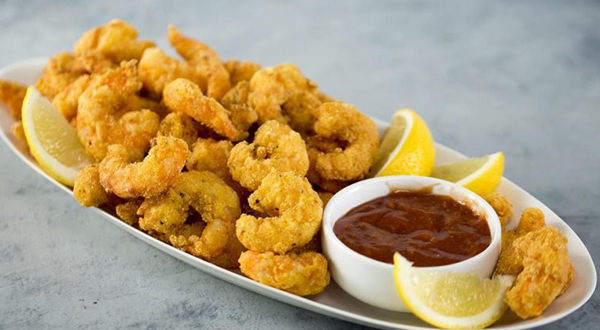Content
“Fear-based programs that try to scare people away from drinking aren’t effective. Some states are considering policies such as reducing the density of stores that can sell alcohol in a given area, restricting advertising by the alcohol industry, or raising taxes on alcohol sales. Doctors often overlook alcohol as a contributing factor to an illness, such as congestive heart failure or atrial fibrillation. This approach to healthcare is slowly beginning to change as more healthcare professionals are trained to understand the signs and symptoms of substance use disorders and best practices in addiction treatment.
In 2019, 30 states had alcohol-related death rates in the double digits compared to 2006 when only 10 states had alcohol-related deaths in the double digits. The highest death rates tend to be found in the western part of the United States. One bright spot in the data is that for the year (2019), alcohol vs drugs the age-adjusted suicide rate declined from 14.2 to 13.9 deaths per 100,000 deaths, a 2 percent decrease. This decline in suicide deaths was the first since 2005 and is statistically significant. Preliminary 2020 data show a further small decrease in suicides despite the COVID crisis.
Alcohol vs Drugs: The Results
The first is tobacco, and the second is poor diet and physical inactivity. In 2014, alcohol-impaired driving fatalities accounted for 9,967 deaths (31 percent of overall driving fatalities). Last year, we learned that alcohol is the direct cause of 7 forms of cancer. The study, published in the journal Addiction, provided evidence that https://ecosoberhouse.com/boston-sober-house-dorchester/ alcohol is the direct cause of breast, liver, colon, esophagus, and other types of cancer. The researchers also mentioned that there is growing evidence, though not conclusive yet, that alcohol also causes skin, prostate, and pancreatic cancer. Alcohol also causes fatty liver disease, cirrhosis of the liver, and alcohol hepatitis.
- Just because Cocaine and heroin are illegal doesn’t make them more dangerous.
- I don’t drink every day,” we hear people say, even during treatment for alcohol use disorder.
- In 2017 HHS declared a public health emergency and announced a 5-Point Strategy To Combat the Opioid Crisis.
- Nearly two-thirds of these deaths (66%) involved a prescription or illicit opioid.
- As you probably suspect, these high intensity drinkers are a danger to themselves, as well as others.
More importantly, those alcohol results are from 2019 rather than 2020 and don’t take Covid into account. It’s more than quite likely that once the pandemic is figured into the equation, the number of alcohol-related fatalities will unfortunately rise even further. These stressors are impacting rates of alcohol and drug use and drug overdose deaths as more people turn to substances to help them cope. According to the Centers for Disease Control and Prevention, drug overdoses killed 63,632 Americans in 2016.
Miscellaneous Death Rates due to Alcoholic Consumption
In recent years, the numbers of drug overdoses have taken a sharp upward turn. Every day, about 37 people in the United States die in drunk-driving crashes — that’s one person every 39 minutes. In 2021, 13,384 people died in alcohol-impaired driving traffic deaths — a 14% increase from 2020. There are gender differences in alcohol-related mortality and morbidity, as well as levels and patterns of alcohol consumption. The percentage of alcohol-attributable deaths among men amounts to 7.7 % of all global deaths compared to 2.6 % of all deaths among women.
The good news about these conditions is that they are both treatable. Even if you have experienced a near-overdose, you can go on to live a healthy, happy life in recovery. More people are experimenting with cutting back, with movements like “dry January” and alcohol-free mocktails becoming mainstream. “It’s a great time for people to explore alternative ways of being social—even for people without AUD. Every time we reduce alcohol we experience better health,” Witkiewitz said. We are living in a time of unprecedented communication throughout the world.
How to Get Help for Drug and Alcohol Misuse or Addiction
These opioid-related deaths have skyrocketed because of Fentanyl – which now contaminates almost every substance, but still killed fewer individuals last year than alcohol-related deaths. Also, the role of suicidal ideation, social isolation and other factors unique to the pandemic could not be established. “Both the safety net and the financing of health care are radically different in other rich countries where — with a few exceptions — there are few deaths of despair,” they noted. Studies show there may be a link between marijuana use during pregnancy and low birth weight. Despite marijuana being the most commonly used illegal drug during pregnancy, it’s hard to tell what the effect of marijuana use is, since there are not many studies out there.
This is no different from regular drug dealers who depend on consumers to buy their products. “The drug, alcohol and suicide crisis has been growing for a decade and growing in uneven ways. The COVID crisis has increased stress on all Americans and has worsened the differential impact of health inequities on communities of color. While all Americans need support coping with the pandemic, people who are currently struggling with addiction or a mental health issue need urgent attention,” said John Auerbach, President and CEO Trust for America’s Health. States with the highest age-adjusted death rates from alcohol, drugs and suicide combined in 2019 were New Mexico (88 deaths per 100,000 people) and West Virginia (85.1 deaths per 100,000 people). In people with AUD who stop drinking suddenly, alcohol withdrawal can be dangerous, even deadly.






